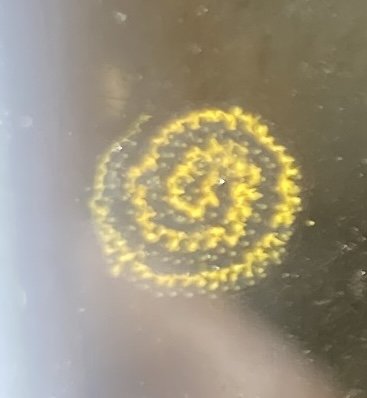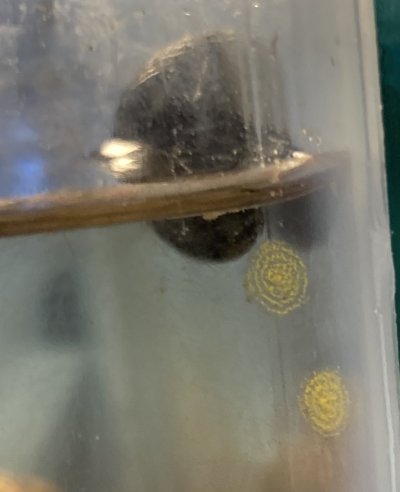Navigation
Install the app
How to install the app on iOS
Follow along with the video below to see how to install our site as a web app on your home screen.
Note: This feature may not be available in some browsers.
More options
You are using an out of date browser. It may not display this or other websites correctly.
You should upgrade or use an alternative browser.
You should upgrade or use an alternative browser.
spiral plaque of eggs?
- Thread starter Greengirl
- Start date
- Tagged users None
What snails do you have? I know Cerith snails make spiral egg masses.
Never seen anything like that. Hopefully others with more knowledge can help ID.
I'm actually thinking this is the Elysia eggs - for example of Elysia sp. eggs see image G below (there are other species with similar egg spirals too):
Source: https://www.researchgate.net/figure...ss-A-B-Live-specimens-resting_fig58_306006471
OMG!!! That would make me soooooo happy. Hope you are right! And in fact the pic looks a lot more like these than the snail eggs. I just hope the copepods or whatever don't eat the eggs before they can hatch. Also weird to me that the slugs prefer to lay the eggs up high on clear glass than down in the plants, but who am I to judge. I did notice one slug up in that vacinity recently so could be that's why. How long before they hatch?
For most species, it seems they tend to prefer to lay on algae, but sometimes they'll lay on the glass anyway. I'm not exactly sure how long before the eggs hatch for your species, but given that Elysia timida takes up to 3 weeks, E. clarki ~16-18 days, and E. cornigera ~15-19 days, I'd guess your eggs would be in that same range. So, probably 2 to 3 weeks.OMG!!! That would make me soooooo happy. Hope you are right! And in fact the pic looks a lot more like these than the snail eggs. I just hope the copepods or whatever don't eat the eggs before they can hatch. Also weird to me that the slugs prefer to lay the eggs up high on clear glass than down in the plants, but who am I to judge. I did notice one slug up in that vacinity recently so could be that's why. How long before they hatch?
Sometimes with E. timida and E. cornigera (and likely with some other species too), the eggs will hatch into fully formed, crawling juveniles, but most of the time they hatch into free-swimming veliger larvae (the veligers don't typically survive in our tanks, but the crawling juveniles likely would).
I just found this reference that specifically documented E. tuca and I'm hopeful with some fresh H. incrassata the hatchlings will morph and survive. Fingers crossed.For most species, it seems they tend to prefer to lay on algae, but sometimes they'll lay on the glass anyway. I'm not exactly sure how long before the eggs hatch for your species, but given that Elysia timida takes up to 3 weeks, E. clarki ~16-18 days, and E. cornigera ~15-19 days, I'd guess your eggs would be in that same range. So, probably 2 to 3 weeks.
Sometimes with E. timida and E. cornigera (and likely with some other species too), the eggs will hatch into fully formed, crawling juveniles, but most of the time they hatch into free-swimming veliger larvae (the veligers don't typically survive in our tanks, but the crawling juveniles likely would).
Attachments
Great find with that document - good luck!I just found this reference that specifically documented E. tuca and I'm hopeful with some fresh H. incrassata the hatchlings will morph and survive. Fingers crossed.
Similar threads
- Replies
- 1
- Views
- 183
- Replies
- 76
- Views
- 2,853
















